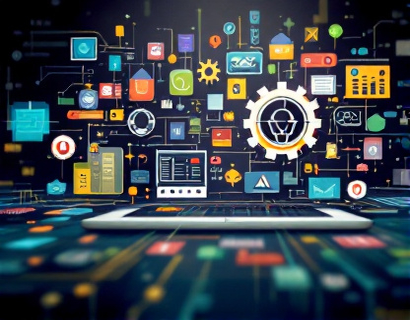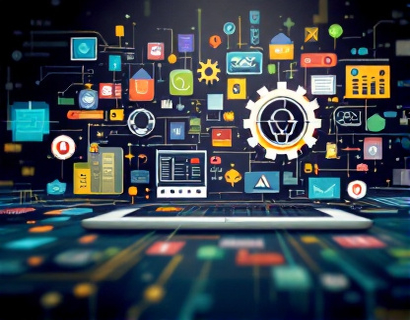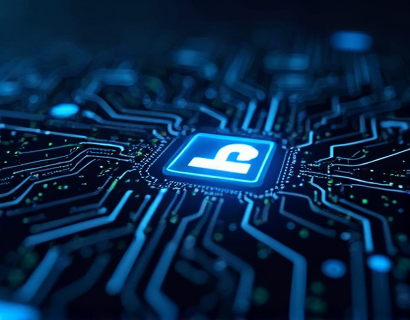AI & Blockchain Integration: A Business User's Essential Guide to Seamless Digital Transformation
The integration of Artificial Intelligence (AI) and Blockchain technology represents a pivotal shift in the digital landscape, offering businesses unprecedented opportunities for innovation, efficiency, and growth. This guide serves as an essential resource for business leaders aiming to navigate the complexities of merging these two transformative technologies. By providing actionable strategies and insights, this article aims to streamline operations, enhance security, and unlock new growth opportunities in the digital transformation journey.
To begin, it's crucial to understand the individual capabilities and potential of AI and Blockchain before exploring their synergistic integration. AI, with its ability to analyze vast datasets, learn from patterns, and make decisions with minimal human intervention, has revolutionized industries ranging from healthcare to finance. Its applications include predictive analytics, automated customer service, and personalized marketing strategies. On the other hand, Blockchain, known for its role in cryptocurrencies, offers a decentralized, transparent, and secure way to record transactions and manage data. Its immutable ledger ensures data integrity and reduces the risk of fraud.
The integration of AI and Blockchain can lead to enhanced data security, improved operational efficiency, and the creation of new business models. For instance, AI can be used to analyze data stored on a Blockchain, providing deeper insights and enabling more informed decision-making. Conversely, Blockchain can secure the data used by AI systems, ensuring that the information remains tamper-proof and trustworthy. This combination not only fortifies the digital infrastructure but also opens up avenues for innovative services and products.
Understanding the Synergy Between AI and Blockchain
The synergy between AI and Blockchain lies in their complementary strengths. AI's analytical prowess can be leveraged to process and interpret the vast amounts of data stored on a Blockchain, while Blockchain's security features can protect the data and transactions involved in AI operations. This partnership can lead to more robust and reliable systems, particularly in industries where data integrity and security are paramount.
One of the key areas where AI and Blockchain can work together is in supply chain management. Blockchain provides a transparent and immutable record of transactions, while AI can analyze this data to optimize logistics, predict demand, and identify bottlenecks. For example, a company can use AI to analyze supply chain data stored on a Blockchain to predict potential delays and adjust inventory levels proactively. This not only enhances efficiency but also builds trust among supply chain partners due to the transparency provided by Blockchain.
Enhancing Security Through AI and Blockchain Integration
Security is a critical concern for businesses adopting digital technologies. The integration of AI and Blockchain can significantly bolster security measures. AI can monitor network activities in real-time, detecting anomalies and potential threats that might indicate a security breach. Blockchain, with its decentralized and immutable nature, ensures that once data is recorded, it cannot be altered or deleted, providing a tamper-proof record of all transactions and activities.
For instance, in the financial sector, AI can be used to analyze transaction patterns on a Blockchain to identify fraudulent activities. Machine learning algorithms can learn from historical data to recognize unusual patterns and flag them for review. This proactive approach to security can prevent financial losses and protect customer data, enhancing the overall trust in digital financial services.
Improving Operational Efficiency with AI and Blockchain
Operational efficiency is another area where the combination of AI and Blockchain can drive significant improvements. AI can automate routine tasks, reduce manual errors, and optimize resource allocation, while Blockchain can streamline processes by providing a single source of truth and reducing the need for intermediaries.
In the context of smart contracts, Blockchain technology enables the execution of agreements without the need for intermediaries. When combined with AI, smart contracts can be programmed to execute complex tasks based on predefined conditions. For example, in the insurance industry, AI can assess claims data and automatically trigger the payment process if the conditions are met, all recorded on a Blockchain. This not only speeds up the claims process but also reduces the risk of fraud and errors.
In manufacturing, AI can optimize production schedules and maintenance routines, while Blockchain can ensure that all components and materials are authentic and traceable. This dual approach can reduce downtime, lower costs, and improve product quality, leading to a more efficient and reliable production process.
Unlocking New Growth Opportunities
The integration of AI and Blockchain is not just about enhancing existing processes; it also opens up new growth opportunities. Businesses can leverage these technologies to create innovative products and services that were previously unimaginable.
One such opportunity is in the realm of digital identity management. By combining AI for identity verification and Blockchain for secure storage, businesses can offer robust and user-friendly identity solutions. This can be particularly beneficial in sectors like healthcare, where secure access to patient records is crucial, or in finance, where KYC (Know Your Customer) processes can be streamlined.
Another area is in the development of decentralized applications (dApps) that utilize both AI and Blockchain. These applications can offer decentralized versions of traditional services, such as decentralized finance (DeFi) platforms that use AI for risk assessment and automated trading. This not only democratizes access to financial services but also creates new revenue streams for businesses involved in these platforms.
Challenges and Considerations
While the potential benefits of integrating AI and Blockchain are substantial, businesses must also be aware of the challenges and considerations involved. One of the primary challenges is the technical complexity of integrating these technologies. Both AI and Blockchain require specialized knowledge, and businesses may need to invest in training or hiring experts to navigate the implementation process.
Another consideration is the regulatory landscape. As AI and Blockchain are relatively new technologies, regulations are still evolving. Businesses must stay informed about local and international regulations to ensure compliance. This includes data privacy laws, such as the GDPR in Europe, which have implications for how data is handled and stored on a Blockchain.
Scalability is also a critical factor. While Blockchain technology is known for its security, it can face scalability issues, especially when dealing with high transaction volumes. Businesses need to evaluate the scalability of the Blockchain solutions they choose and consider hybrid approaches that combine the strengths of different Blockchain platforms.
Strategies for Successful Integration
To successfully integrate AI and Blockchain, businesses should adopt a strategic approach that includes the following steps:
- Assess Current Infrastructure: Evaluate existing systems and identify areas where AI and Blockchain can add value. This includes understanding data flows, process bottlenecks, and security vulnerabilities.
- Define Clear Objectives: Clearly define the goals of the integration, whether it's to enhance security, improve efficiency, or create new products and services. This will guide the implementation process and help measure success.
- Build a Skilled Team: Assemble a team with expertise in both AI and Blockchain. This may involve hiring new talent or upskilling existing employees through training and development programs.
- Pilot Projects: Start with small-scale pilot projects to test the integration in a controlled environment. This allows for the identification and resolution of issues before a full-scale rollout.
- Monitor and Adapt: Continuously monitor the performance of the integrated system and be prepared to make adjustments based on feedback and changing business needs.
By following these strategies, businesses can navigate the integration of AI and Blockchain effectively, reaping the benefits while minimizing risks.
Conclusion
The integration of AI and Blockchain represents a transformative opportunity for businesses looking to enhance their digital capabilities. By leveraging the strengths of both technologies, companies can achieve greater efficiency, security, and innovation. While the journey may present challenges, the potential rewards are significant. This guide has provided actionable strategies and insights to help business leaders embark on this exciting digital transformation journey. Embracing AI and Blockchain integration is not just about keeping up with the times; it's about leading the way into a more secure, efficient, and innovative future.










































